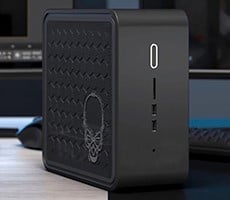Systemax Endeavor Xeon Workstation
|
PCMark05 has been superseded by Futuremark’s PCMark Vantage suite. However, Vantage only runs on Windows Vista. Given Systemax’s decision to sell the Endeavor with XP, we were left leaning on the aging PCMark05 suite. We ran the workstation through the full battery of 11 system tests designed to mimic real-world usage patterns. Everything from XP startup time to file decryption, Web page rendering, and multi-tasking are measured here.

Despite its weaker storage subsystem, the reference machine’s superior processing power again pushes it through this synthetic-gone-real-world benchmark. The more economical take-away here is that the Endeavor, which costs signficantly less than the reference box, is able to crank out such respectable numbers. How's this for perspective? The street price on a pair of Xeon X5365 CPUs, the processor in our machines, costs as much as Systemax's entire workstation.
Given the pedigree of Systemax’s Endeavor, it’s fair to say that the box isn’t optimized for gaming. However, Futuremark’s 3DMark06 still gives us a good idea of how the machine’s graphics subsystem handles today’s DirectX-based workloads.

Amazingly, the Quadro FX 1700’s unified shader architecture and 512MB of onboard graphics memory pushes its way past the Quadro FX 3450 in 3DMark06. The Endeavor shows that when your workload is decidedly graphics-heavy, processing horsepower will only take you so far. The Quadro FX 1700 costs less than the FX 3450, but its architecture and memory configuration is better suited to 3DMark’s DirectX tests.

As expected, 3DMark06’s CPU test swings back in favor of the Xeon X5365.






